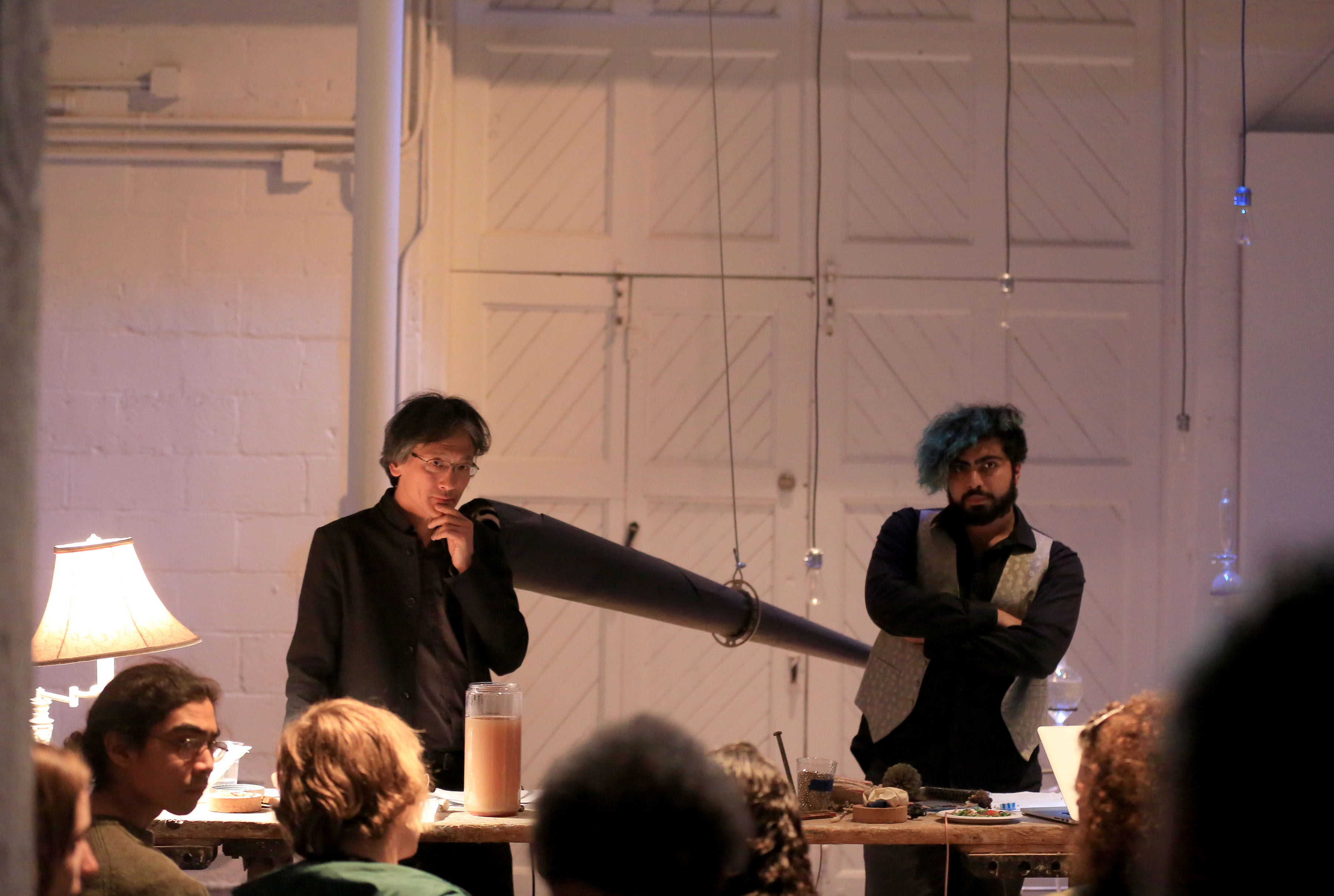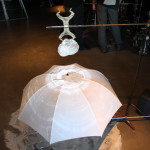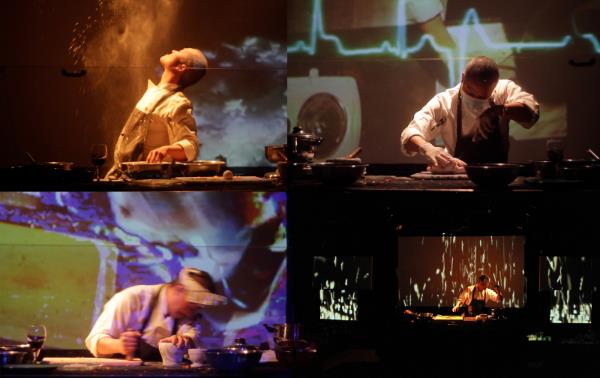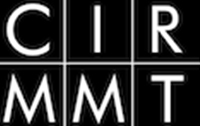15 February – 8 March 2014 Matthews Center iStage, Synthesis Center
School of Arts, Media + Engineering
Arizona State University, Phoenix, USA
Purpose
The main scientific goal of this Residency is to gain insight into (1) temporal texture via simple relational (vs ego-centered) productions of correlated patterns over time, and (2) transitions in continuous, multivalent states and embodied agency.
The artful (and artfully precise) conditioning of experience is a means but not the end of this particular Synthesis residency.
The practical goals are to
(1) bring together some ensembles* that have advanced techniques to share with other experts, and
(2) carry out an experiment in improvisation using your apparatus while resident in the AME iStage blackbox which is being renovated.
The strategic goal and value for the Synthesis Center and the School of Arts, Media + Engineering is to host the building of an apparatus, which means not only equipment and software, but also people — students + faculty + technical staff — knowing how to keep using it in creation research beyond the workshop. (Participants from the Topological Media Lab will bear the main practical responsibility for leaving behind a working apparatus as a sibling to the Ozone responsive environments apparatus at Concordia, in order to facilitate subsequent research collaborations.)
Experts in the art and science of responsive environments will teach each other how to use some of the essential parts of our systems.
* An ensemble is a set of technology, people, and techniques : e.g. software frameworks, instruments, devices, plus practitioners, makers, researchers, employing techniques and approaches, all co-refined together working over several projects under a family of related artistic expressions, conceptual questions or philosophical investigations.
More infos : http://improvisationalenvironments.weebly.com/











